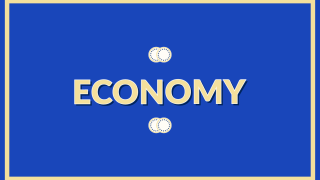In his book Foucault’s Pendulum, Umberto Eco affirms that “any fact becomes important when it connects with another”. There’s nothing like having hard numbers to able to understand the tessitura in which the Mexican economy finds itself. While discussion inside and outside the government is concentrated on taxes, expenditures and legislation oriented toward imposing ever more controls, a new study reveals that the underlying problem of the Mexican economy does not reside in those issues but in that in reality it is about two distinct economies that clash and have the effect of diminishing the growth rate. The study shows why averages say nothing and that an accurate diagnosis would allow focusing the government’s policy with better aim.
In a word, the Mexican economy works at two speeds: one feeds the growth of productivity while the other one subtracts from it. According to the statistics, growth of productivity in recent decades has been scraping the bottom of the barrel: 0.8% on average. However, the modern sector of the economy has experienced an average annual growth of productivity of 5.8%, while that of the traditional and informal economy has diminished at a rhythm of 6.5% per annum. The average does nothing but confuse the issue and justify counterproductive public policies.
Productivity isn’t everything, but in the long run it is almost everything, writes Paul Krugman in The Age of Diminished Expectations (1994): “A country’s ability to improve its standard of living over time depends almost entirely on its ability to raise its output per worker”. Productivity is the result of everything that occurs in the economy, thus constituting a crucial measurement of the performance of it. What happens when the average tells us absolutely nothing significant?
The McKinsey report begins with a series of contrapositions: “What is Mexico? Is it a dynamic industrial power that builds more cars than Canada and that has become a global automobile exporter? Or is it a land of traditional slow-growing businesses and informality? Has it found the right combination of reforms to restore rapid GDP growth and raise living standards? Or is it stuck in a perpetual cycle of economic advances and retreats? Is it a modern, urbanized state that has adopted market reforms and built well-functioning institutions, or is it a place where corruption and crime are tolerated?” This is only the beginning and there’s no flab in the questions…
Let’s see some suggestive numbers. The report states that there are two economies: one that grows rapidly and another that tends to contract. Traditional and informal enterprises achieved 28% of the productivity of the modern ones in 1999, but only 8% in 2009: that is, not only is there a large gap between the two sectors, but also this is widening. Old-style bakeries exhibit one fiftieth the productivity of modern bread-making producers; 53% of small and medium-sized business have no access to financial services; at the current growth of productivity, the growth rate of the overall economy will decrease to 2% annually at the outside. Taken together, the Mexican productive plant has a productivity of 24% of that of the U.S., even though many Mexican companies are more productive than those of the U.S. In a word, to reach a sustained GNP growth of 3.5%, not by any means the most ambitious goal, the average rhythm of the growth of productivity would have to triple. The big question is whether something of that magnitude can be achieved.
Whoever has observed or experienced the way the country functions would immediately recognize the contrasts and contradictions. As the report says, there are two economies: one that runs at high speed, and another that lags behind. But it’s not only that: the country is characterized by situations that are unintelligible for a foreign observer or investor. Perhaps Mexicans –accustomed as we are to the surrealism of daily life- are not surprised by cases such as those of Line 12 of the Metro (a misfit between the contractor who built the line and the supplier of the wagons that do not match the rails) or by Oceanografía (a case of outright fraud involving politicians from all parties) which, although not inconceivable in other latitudes, over there would be treated, and dealt with, as aberrations. For Mexicans these are frequent occurrences, not aberrations: excesses, frauds, unscrupulous authorities, the absence of a government that adheres to the rules, manipulation of facts and times for political or individual gain, supposedly independent regulators (and now with “constitutional autonomy”) with mandates that are contradictory and potentially detrimental to the success of their function.
In a world that advances at the speed of light, the snapshot that this report presents to us is moreover worrisome because it reveals a country that refuses to deal with its underlying deficiencies, or that has been incapable of doing so, and that is experiencing a growing gap in its economy. The modern part accelerates the growth of its productivity and becomes a global exporter. The traditional part –that defends itself tooth and nail from any change- drags its feet and impoverishes the country. And the latter is winning over the legislative battles.
Many studies similar to this one conclude with a list of great reforms that would be indispensable for reverting the diagnosis, which renders their proposal only marginally useful. The immense value of this report resides in the wisdom of its recommendations: reduce the consumption of electricity, improve the productivity of investments in infrastructure, emphasize the development of skills. Evidently many changes are required, but the key lies in the details that make the difference and that would make a much more successful country possible.
The Evidence






Comments